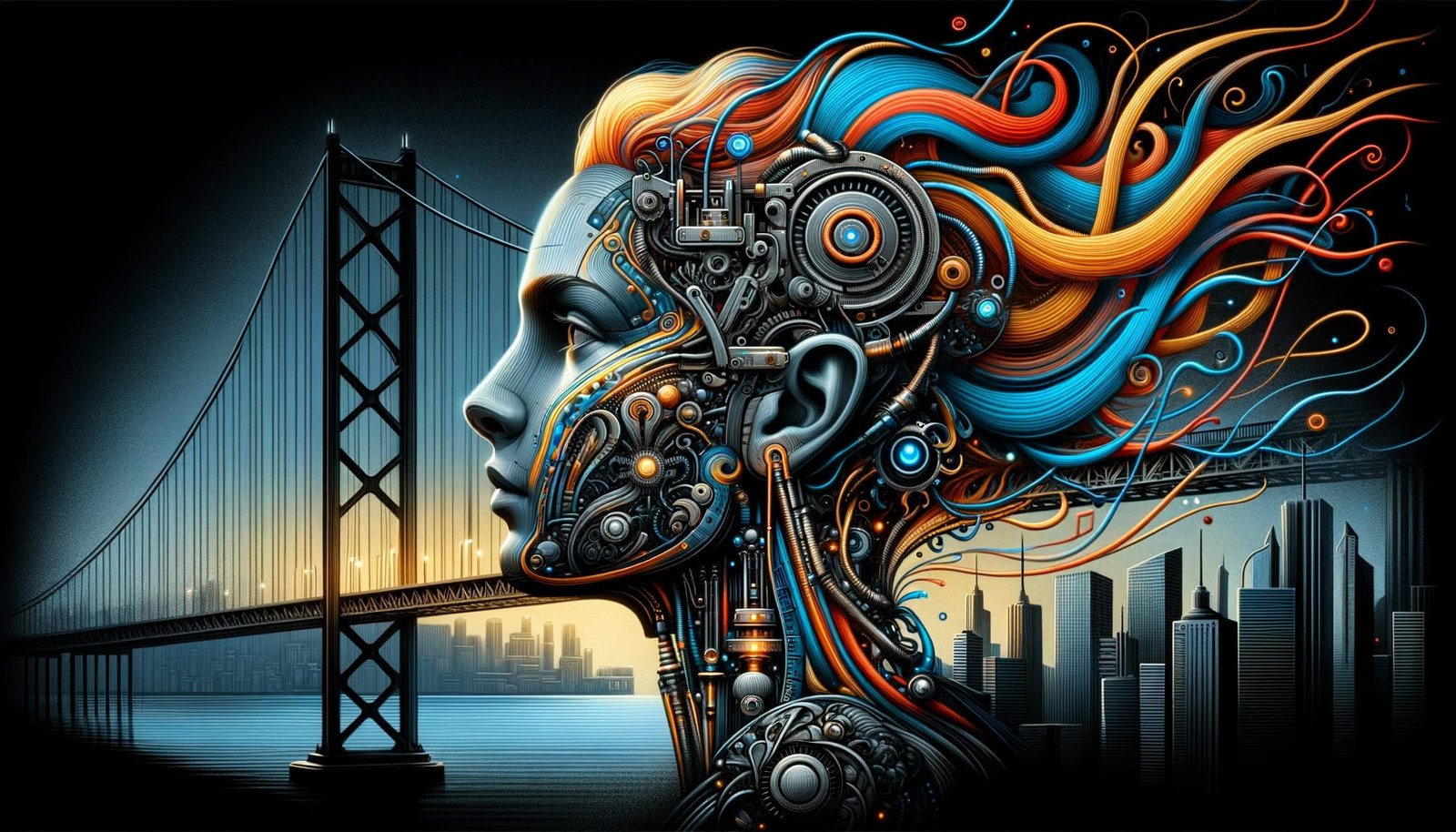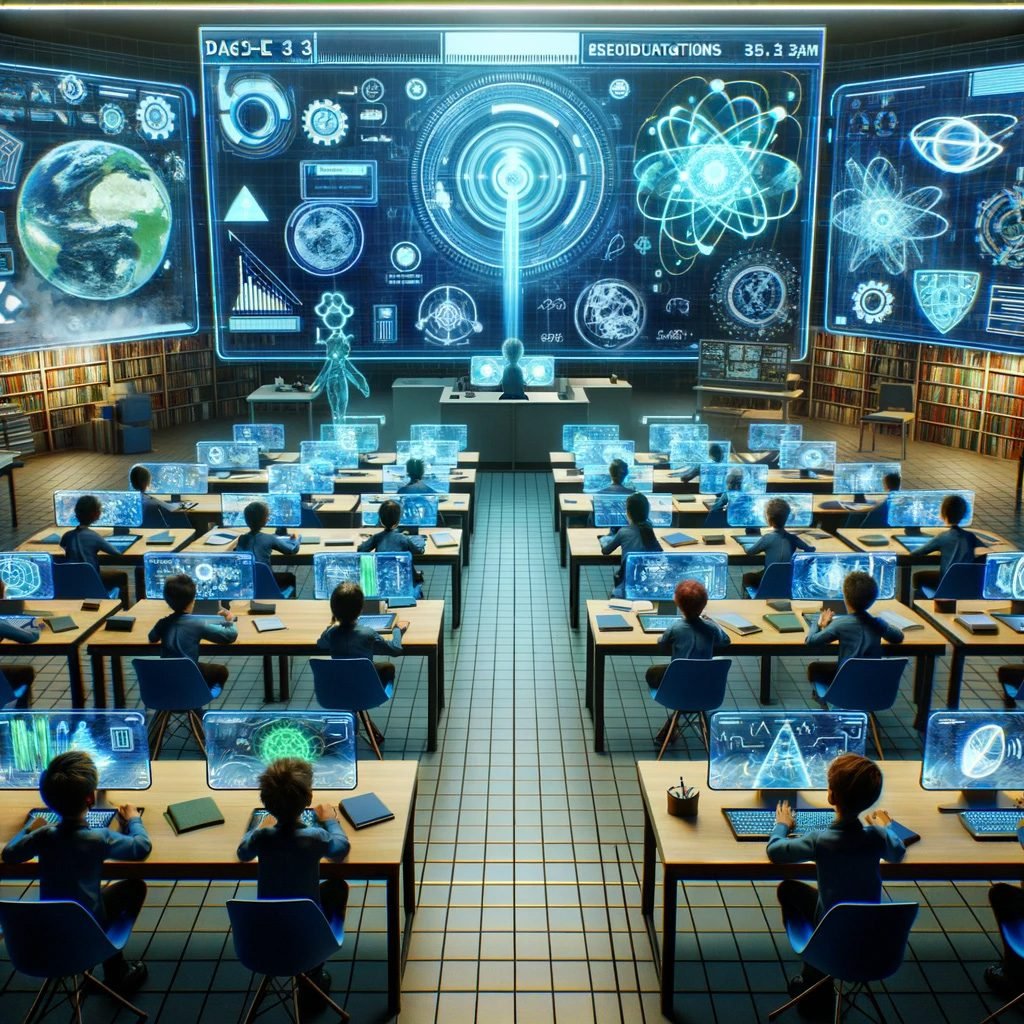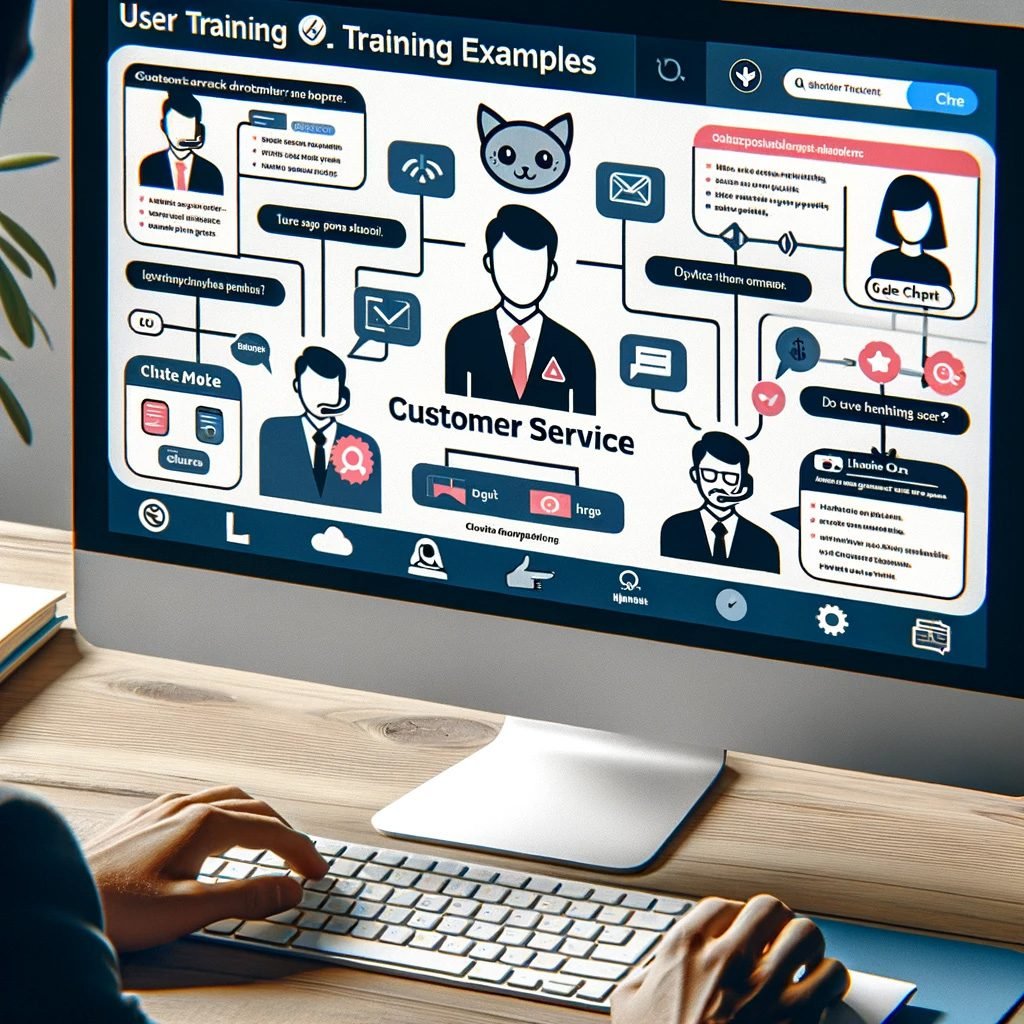Craiyon A Powerful DALL-E 3 Alternative for Creative Text-to-Image Generation
Craiyon A Powerful DALL-E 3 Alternative for Creative Text-to-Image Generation
Introduction – Craiyon A Powerful DALL-E 3 Alternative
In recent years, the integration of artificial intelligence in creative domains has revolutionized the way we perceive and interact with art. From music composition to visual arts, AI has carved a niche for itself, proving that machines can indeed resonate with human emotions and aesthetics. One such groundbreaking innovation in the realm of AI-driven artistry is DALL-E 3, a neural network marvel capable of generating intricate visual imagery from textual prompts. However, as the AI landscape continues to evolve, new players are entering the scene, challenging established giants. Enter Craiyon, a promising contender that’s making waves as a formidable DALL-E 3 alternative.
The rise of AI in creative fields.
The fusion of artificial intelligence with creative disciplines has ushered in a new era of possibilities. Gone are the days when artistry was solely a human domain. Today, tools like DALL-E 3 and Craiyon are not just assisting but actively participating in the creative process. These AI-driven platforms, backed by sophisticated algorithms, can interpret, generate, and even innovate, pushing the boundaries of what’s possible in art. This evolution is reminiscent of the transformative impact of platforms like WordPress for educational websites, reshaping entire industries.
Setting the stage for exploring Craiyon as a formidable DALL-E 3 alternative.
While DALL-E 3 has undoubtedly set high standards in AI-generated art, the emergence of Craiyon signifies that the race is far from over. As businesses and creators seek more tailored solutions, alternatives like Craiyon offer a fresh perspective, potentially bridging gaps left by their predecessors. This article aims to delve deep into Craiyon, exploring its capabilities, strengths, and how it stands toe-to-toe with DALL-E 3 in the ever-evolving AI artistry landscape.
DALL-E 3: A Quick Overview
In the expansive universe of artificial intelligence, DALL-E 3 stands as a beacon of innovation, showcasing the sheer potential of neural networks in creative endeavors. Originating from OpenAI, the same entity that introduced us to GPT-3, DALL-E 3 is not just another AI tool; it’s a testament to the future of art and design.
A brief recap of DALL-E 3 and its capabilities.
DALL-E 3, an advanced iteration of its predecessor DALL-E, is a neural network designed to transform textual prompts into detailed visual representations. Whether it’s a surrealistic painting described in words or a specific object with intricate details, DALL-E 3 can interpret and generate it with remarkable accuracy. Its ability to understand context, nuances, and even humor in textual prompts sets it apart, making it a favorite among artists, designers, and businesses alike. This capability has been likened to the transformative power of platforms such as WordPress for business websites, changing the way we approach design.
How it revolutionized text-to-image generation.
Before DALL-E 3, the idea of converting a mere textual description into a high-fidelity image was a distant dream. However, with its introduction, the boundaries between language and visual art blurred. DALL-E 3’s ability to generate images, be it abstract concepts, fictional creatures, or real-world objects with a twist, showcased a revolution in AI-driven creativity. It opened doors for designers to visualize ideas instantly, for educators to explain concepts through custom visuals, and for businesses to create unique branding elements. In essence, DALL-E 3 did for image generation what platforms like Fiverr did for freelancing – democratizing access and setting new industry standards.

Introducing Craiyon: The New Contender
In the rapidly evolving landscape of AI-driven creativity, while DALL-E 3 has been making waves, a new contender has emerged, challenging the status quo. Enter Craiyon, a tool that promises not just to match the prowess of established giants but to bring its unique flair to the table.
A first look at Craiyon and its promise in the AI creative space.
Craiyon, at its core, is designed to harness the power of artificial intelligence for creative endeavors. While it shares the text-to-image generation capability with DALL-E 3, it brings additional features tailored to the needs of modern creators. Whether it’s the ease of integration with platforms like WordPress for business websites or its adaptive learning mechanism that evolves with user input, Craiyon is setting new benchmarks. Its promise lies not just in replicating what’s been done before but in pushing the boundaries of what’s possible, making it a tool to watch out for in the AI creative space.
What sets Craiyon apart from other AI tools.
Several factors distinguish Craiyon in the crowded AI tool market. Firstly, its user-friendly interface ensures that even those unfamiliar with AI can harness its power effortlessly. Moreover, Craiyon’s commitment to continuous improvement, backed by a robust feedback loop with its user community, ensures it stays ahead of user needs. Its compatibility with various platforms, including integration capabilities with sites built on Fiverr, adds to its versatility. But perhaps its most significant selling point is its proprietary algorithm, which, while maintaining high-quality image generation, also ensures faster processing times and more accurate representations. In a world where every second count, this efficiency can be a game-changer for businesses and creators alike.
Core Features of Craiyon
Craiyon, while a newcomer in the AI-driven creative space, has quickly established itself as a force to be reckoned with. Its suite of features not only matches some of the capabilities of giants like DALL-E 3 but also introduces innovative functionalities that set it apart.
Deep dive into the standout features of Craiyon.
- Adaptive Learning Mechanism: One of Craiyon’s most impressive features is its ability to learn and adapt from user inputs. Over time, the tool refines its outputs based on feedback, ensuring that the generated images become increasingly aligned with user expectations.
- Multi-layered Image Generation: Craiyon can produce images with multiple layers, allowing users to edit individual components post-generation. This feature provides creators with greater flexibility in tweaking outputs to their exact requirements.
- Real-time Collaboration: Built for modern teams, Craiyon offers real-time collaboration features. Multiple users can provide input or make changes to a project simultaneously, streamlining the creative process.
- Platform Integration: Craiyon boasts seamless integration capabilities with popular platforms, including WordPress for business websites and e-commerce sites, making it easier for businesses to incorporate AI-generated images directly into their workflows.
- Customizable Style Templates: While DALL-E 3 offers a range of styles, Craiyon takes it a step further by allowing users to create and save their style templates. This feature ensures brand consistency across all generated images.
- Enhanced Security Protocols: Recognizing the importance of data security, Craiyon has implemented advanced encryption and security measures to protect user inputs and generated outputs.
How these features compare to DALL-E 3.
While DALL-E 3 is renowned for its high-quality image generation from textual prompts, Craiyon matches this quality and introduces additional features tailored to modern creators. The real-time collaboration, platform integration, and customizable style templates are areas where Craiyon has an edge. Additionally, Craiyon’s focus on continuous improvement through its adaptive learning mechanism ensures that it remains a dynamic tool that evolves with user needs. On the other hand, DALL-E 3, with its pedigree from OpenAI, has a more extensive research backing and a larger user base. However, for businesses and creators looking for a tool that offers both quality and flexibility, Craiyon presents itself as a formidable alternative.
Text-to-Image Generation: Craiyon vs. DALL-E 3
In the realm of AI-driven text-to-image generation, both Craiyon and DALL-E 3 have made significant waves. While DALL-E 3 comes from the renowned OpenAI lineage, boasting a robust algorithmic foundation, Craiyon has quickly risen as a worthy competitor, introducing features that cater to modern creators. Let’s delve into a side-by-side comparison of their capabilities and explore real-world examples that showcase their prowess.
A side-by-side comparison of their capabilities.
1. Image Quality and Fidelity:
- DALL-E 3: Known for producing high-resolution images with intricate details. Its ability to capture nuances from textual prompts is commendable.
- Craiyon: Matches the quality of DALL-E 3 and offers additional editing capabilities post-generation, allowing for further refinement.
2. Adaptability and Learning:
- DALL-E 3: While it generates impressive images, its adaptability based on user feedback is limited.
- Craiyon: Features an adaptive learning mechanism, refining its outputs over time based on user feedback.
3. Integration and Usability:
- DALL-E 3: Primarily a standalone tool with limited integration capabilities.
- Craiyon: Offers seamless integration with platforms like WordPress, making it more versatile for businesses.
4. Collaboration Features:
- DALL-E 3: Lacks real-time collaboration features.
- Craiyon: Designed for modern teams, it supports real-time collaboration, allowing multiple users to work on a project simultaneously.
5. Customization and Styles:
- DALL-E 3: Provides a range of styles but lacks user-defined style templates.
- Craiyon: Allows users to create and save their style templates, ensuring brand consistency.
Real-world examples showcasing their prowess.
DALL-E 3:
- Historical Imagery: A school used DALL-E 3 to generate images of historical events based on textual descriptions, enhancing the learning experience for students.
- Fashion Design: A budding designer inputted futuristic fashion concepts into DALL-E 3, resulting in unique apparel designs.
Craiyon:
- E-commerce Product Visualization: An online store utilized Craiyon to visualize product descriptions, offering potential customers a visual representation before the actual product photoshoot.
- Real Estate Mockups: A real estate agency used Craiyon to generate images of properties based on textual descriptions, aiding in early-stage marketing.
While DALL-E 3 has set a high standard in the text-to-image generation domain, Craiyon, with its unique features and adaptability, is carving a niche for itself. Businesses and creators have a choice to make based on their specific needs and preferences.
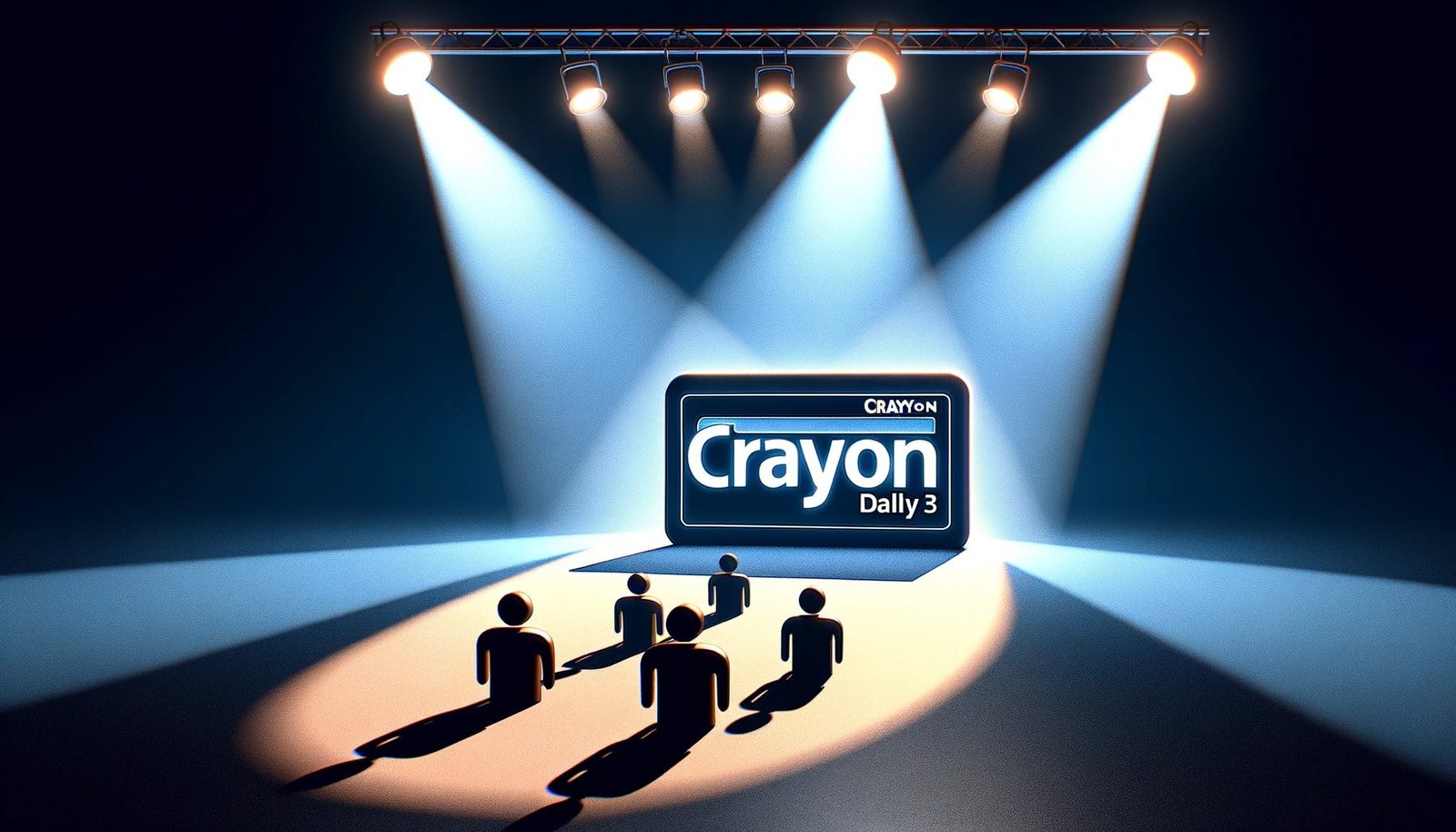
User Experience: Navigating the Craiyon Platform
In the ever-evolving world of AI-driven creative tools, user experience plays a pivotal role in determining a platform’s success. Craiyon, as a formidable alternative to DALL-E 3, has garnered attention not just for its capabilities but also for its intuitive user interface. Let’s embark on a walkthrough of the Craiyon platform and uncover some handy tips and tricks for first-time users.
A walkthrough of the Craiyon user interface.
1. Dashboard: Upon logging in, users are greeted with a clean, minimalist dashboard. Here, you can view your recent projects, access saved templates, and monitor the AI’s learning progress.
2. Text Input Area: Central to the Craiyon experience is the text input area. Simply type in your descriptive text, and watch as the AI begins its magic. A progress bar indicates the generation process.
3. Image Preview and Editing: Once the image is generated, it’s displayed in a preview pane. Users can zoom, pan, or even initiate basic edits like cropping and brightness adjustments right within the platform.
4. Style Templates: To the side, users will find a range of style templates. These can be applied to the generated image, offering variations in aesthetics and mood.
5. Collaboration Tools: For team projects, the collaboration tab allows multiple users to comment, suggest edits, and even draw on the image in real-time.
6. Export and Integration: Finished images can be exported in various formats. Additionally, there’s a seamless integration feature, allowing users to directly upload images to platforms like WordPress or social media channels.
Tips and tricks for first-time users.
1. Be Descriptive: The more detailed your text description, the better the image output. Think of it as guiding the AI to visualize your exact thoughts.
2. Use Style Templates: Before finalizing an image, experiment with different style templates. Sometimes, a slight tweak can make a significant difference.
3. Collaborate in Real-Time: If working in a team, utilize the real-time collaboration tools. It saves time and ensures everyone’s on the same page.
4. Monitor AI Learning: The dashboard provides insights into the AI’s learning progress. Over time, as you use the platform more, the AI adapts and offers improved results.
5. Integrate Seamlessly: Make use of the integration features. Instead of downloading and then uploading images to your desired platform, do it directly from Craiyon for a streamlined workflow.
In essence, Craiyon offers a blend of powerful AI capabilities with an intuitive user interface. For those diving in for the first time, a little exploration can unlock a world of creative possibilities.
The Technology Behind Craiyon
In the vast realm of AI-driven creative tools, the underlying technology plays a pivotal role in determining the quality and efficiency of the outputs. Craiyon, emerging as a notable alternative to DALL-E 3, boasts a robust technological foundation that enables it to produce stunning visual imagery from textual prompts. Let’s delve into the intricate AI and machine learning algorithms that power Craiyon and understand how it achieves such high-quality image generation.
Exploring the AI and machine learning algorithms powering Craiyon.
1. Neural Network Architecture: At the heart of Craiyon lies a deep convolutional neural network, designed to understand and interpret textual prompts. This architecture, inspired by the human brain’s neural connections, allows Craiyon to process vast amounts of data and learn from each interaction.
2. Generative Adversarial Networks (GANs): Craiyon employs GANs, which consist of two neural networks – the generator and the discriminator. While the generator creates images, the discriminator evaluates them. This continuous feedback loop ensures the generated images are of the highest quality and closely match the given textual prompts.
3. Transfer Learning: To speed up the training process and improve efficiency, Craiyon utilizes transfer learning. By leveraging pre-trained models and fine-tuning them with specific datasets, Craiyon can achieve remarkable accuracy in a shorter time frame.
4. Attention Mechanisms: To ensure that every detail in the textual prompt is considered, Craiyon incorporates attention mechanisms. This allows the AI to focus on specific parts of the input text when generating corresponding sections of the image, ensuring a high level of detail and accuracy.
5. Data Augmentation: To enhance the diversity and quality of its outputs, Craiyon employs data augmentation techniques. By introducing variations in the training data (like rotations, zooms, and color adjustments), the AI learns to generate images that are diverse and rich in detail.
How it achieves high-quality image generation.
1. Continuous Training: Craiyon’s AI is in a perpetual state of learning. With each interaction and feedback from users, the system refines its algorithms, leading to improved image generation over time.
2. High-Resolution Datasets: The quality of training data is paramount. Craiyon is trained on high-resolution datasets, ensuring the generated images are sharp, clear, and detailed.
3. Real-time Feedback Loop: Users have the option to provide feedback on generated images. This real-time feedback is integrated into the training process, allowing Craiyon to adapt and enhance its outputs.
4. Optimization Algorithms: Advanced optimization algorithms ensure that the generated images are not just accurate representations of the text but are also aesthetically pleasing.
5. Integration with Cloud Platforms: By leveraging the computational power of cloud platforms, Craiyon can process complex algorithms swiftly, ensuring real-time image generation without compromising on quality.
The technological prowess of Craiyon is a testament to the advancements in AI and machine learning. By harnessing cutting-edge algorithms and continuous learning, Craiyon promises a future where textual ideas can be vividly visualized with unparalleled accuracy and beauty.
Real-World Applications of Craiyon
In today’s digital age, the ability to transform textual ideas into visual masterpieces holds immense value. Craiyon, with its advanced AI-driven capabilities, has been at the forefront of this transformation. Let’s explore some real-world applications where businesses and creatives have leveraged Craiyon to achieve remarkable results.
Case studies showcasing businesses and creatives leveraging Craiyon.
1. The Fashion Designer’s Muse: Background: A budding fashion designer, Amelia, was struggling to visualize her textual descriptions of avant-garde clothing designs. Application: Using Craiyon, she input her detailed descriptions of envisioned outfits. Within moments, she had a series of high-quality images that perfectly encapsulated her vision. Outcome: Amelia used these images as a foundation for her designs, leading to a successful debut at a major fashion week. The ability to visualize her ideas beforehand also reduced production errors and material wastage.
2. Innovative Marketing Campaigns: Background: A digital marketing agency wanted to create a unique campaign for a client’s new product launch. Application: The team used Craiyon to generate visual content based on the product’s features and benefits described in text. This resulted in a series of innovative and unique images that were used across digital platforms. Outcome: The campaign saw a 30% higher engagement rate compared to traditional campaigns, and the client reported a significant boost in product sales.
3. Architectural Wonders: Background: An architectural firm was looking for fresh, out-of-the-box designs for a sustainable living project. Application: Descriptions of eco-friendly, futuristic homes were fed into Craiyon. The platform generated a plethora of architectural designs that blended modern aesthetics with sustainability. Outcome: The firm adopted several of these designs, leading to a project that garnered international acclaim and was hailed as a blueprint for future sustainable living spaces.
4. Interactive Children’s Books: Background: Author Benjamin wanted to create an interactive children’s book but lacked the resources for illustrations. Application: Benjamin used Craiyon to transform his textual storylines into vibrant illustrations that captivated young readers. Outcome: The book became a bestseller, with many praising the quality and creativity of the illustrations. It also paved the way for a series of interactive books using the same approach.
5. Customized E-commerce Experiences: Background: An e-commerce platform wanted to offer personalized shopping experiences for its users. Application: Using Craiyon, they generated product images based on user preferences and textual descriptions. For instance, if a user searched for “vintage leather boots,” Craiyon would generate images matching that description. Outcome: The platform saw a 25% increase in user engagement and a 15% boost in sales, as customers appreciated the tailored shopping experience.
The tangible benefits and outcomes they experienced.
The real-world applications of Craiyon underscore its transformative potential. Businesses and creatives have reported:
- Enhanced Creativity: The ability to visualize textual descriptions has unlocked new realms of creativity, leading to innovative products and services.
- Cost Savings: By reducing the need for manual designs and iterations, businesses have reported significant cost savings.
- Increased Engagement: Visual content generated by Craiyon has proven to be more engaging, leading to higher user interaction rates.
- Time Efficiency: The speed at which Craiyon generates images has drastically reduced project timelines.
- Customization: The ability to produce images tailored to specific descriptions has allowed for unparalleled customization in various fields.
In essence, Craiyon is not just a tool but a revolution in the way we perceive and create. Its real-world applications are a testament to its potential, promising a future where our textual imaginations are bound only by the sky.
Community Feedback: What Users Are Saying About Craiyon
The emergence of Craiyon in the AI-driven creative space has garnered significant attention. As with any innovative tool, the best way to gauge its effectiveness is by listening to those who use it. Let’s delve into the feedback from the Craiyon user community.
Testimonials, reviews, and feedback from the Craiyon user community.
1. “A Game-Changer for My Design Business!”
Sarah, Graphic Designer: “I was initially skeptical about Craiyon, but after using it for a few projects, I’m sold. The quality of images it generates based on textual descriptions is astounding. It’s saved me hours of brainstorming and conceptualizing.”
2. “The Future of Content Creation”
Alex, Digital Marketer: “Craiyon has revolutionized our content creation process. We now generate promotional visuals in half the time. The AI’s ability to understand and visualize complex descriptions is truly remarkable.”
3. “Perfect for Startups Like Ours”
Dev, Co-founder of a Tech Startup: “Being a bootstrapped startup, we didn’t have the budget for a full-fledged design team. Craiyon filled that gap perfectly. From website visuals to product mockups, it’s been invaluable.”
4. “Some Learning Curve, but Worth It!”
Jasmine, Blogger: “It took me a bit to get the hang of framing my descriptions right, but once I did, Craiyon was magic. The visuals it produces have elevated the look of my blog.”
5. “Impressive, but There’s Room for Improvement”
Leon, Art Director: “While Craiyon is impressive, especially for quick projects, it doesn’t replace human creativity. However, as a supplementary tool, it’s fantastic. I’m excited to see its evolution.”
Addressing common questions and misconceptions.
Q: How different is Craiyon from DALL-E 3?
A: While both tools are designed for text-to-image generation, Craiyon is built with a focus on user experience and integration with other platforms. Its algorithms are tailored for a broader range of creative tasks.
Q: Is Craiyon replacing the need for designers?
A: No, Craiyon is a tool that aids designers. It can handle repetitive tasks or provide inspiration, but the human touch, creativity, and understanding of design principles remain irreplaceable.
Q: How accurate is Craiyon in visualizing complex descriptions?
A: While Craiyon is advanced, the output’s accuracy can vary based on the description’s complexity. However, with clear and detailed input, it often produces impressive results.
Q: Are there any privacy concerns with using Craiyon?
A: Craiyon prioritizes user privacy. All descriptions and generated images are encrypted and not used for any other purposes.
The feedback from the Craiyon community is predominantly positive, with users appreciating its capabilities while also acknowledging areas for improvement. As with any evolving tool, continuous feedback and updates will shape its future trajectory.
Pricing and Plans: Getting Started with Craiyon
In the dynamic world of AI-driven creative tools, pricing plays a pivotal role in adoption. Craiyon, understanding the diverse needs of its user base, offers a range of subscription plans catering to individuals, startups, and enterprises. Let’s break down the different tiers and help you identify the best fit for your requirements.
An overview of the different subscription plans and pricing tiers.
1. Free Tier:
- Features: Basic text-to-image generation, access to community forums, limited monthly requests.
- Price: $0/month
- Best For: Hobbyists, individuals testing the waters, or those with minimal requirements.
2. Pro Plan:
- Features: Enhanced image generation capabilities, priority support, increased monthly requests, high-resolution image downloads.
- Price: $49/month
- Best For: Freelancers, bloggers, and small businesses looking for regular usage without heavy demands.
3. Business Plan:
- Features: Advanced AI features, API access, unlimited monthly requests, team collaboration tools, and premium support.
- Price: $199/month
- Best For: Mid-sized businesses, startups, and agencies requiring robust features and integrations.
4. Enterprise Plan:
- Features: Custom solutions tailored to specific needs, dedicated account manager, on-premise installations, and priority feature requests.
- Price: Custom pricing based on requirements.
- Best For: Large enterprises, institutions, and organizations with specific demands and higher security needs.
Recommendations based on business size and needs.
- Individuals & Hobbyists: The Free Tier is a great starting point. It allows you to explore Craiyon’s capabilities without any financial commitment.
- Freelancers & Small Businesses: The Pro Plan offers a balanced set of features, ensuring you get value for your money while accessing advanced tools.
- Mid-sized Businesses & Agencies: The Business Plan is tailored for those who require seamless integrations, collaboration tools, and a higher request limit.
- Large Enterprises & Institutions: The Enterprise Plan is the way to go. With custom solutions and dedicated support, it ensures all specific needs are met.
Craiyon’s diverse pricing plans ensure that there’s something for everyone. Whether you’re just starting out or are a large enterprise, Craiyon offers the flexibility and features to meet your creative needs. Before committing, consider taking advantage of any trial periods or demo sessions to ensure you’re making an informed decision.
The Future of Text-to-Image Generation
The realm of AI-powered creative tools is in a constant state of flux, with innovations emerging at a rapid pace. Text-to-image generation, a once fantastical concept, is now a reality, and tools like Craiyon and DALL-E 3 are at the forefront of this revolution. As we look ahead, several predictions and trends emerge that could shape the future of this fascinating domain.
Predictions and trends for AI-powered creative tools.
1. Enhanced Realism:
As AI algorithms become more sophisticated, the generated images will achieve a level of realism indistinguishable from actual photographs. This will open doors to applications in industries like film, gaming, and virtual reality.
2. Personalized Content Creation:
Future tools might be able to tailor content based on individual user preferences, creating truly personalized visual experiences. Imagine a tool that understands your unique style and crafts images accordingly.
3. Integration with Augmented Reality (AR) and Virtual Reality (VR):
Text-to-image tools could seamlessly integrate with AR and VR platforms, allowing users to generate real-time visuals in immersive environments.
4. Ethical and Copyright Concerns:
As the generated images become more realistic, there will be growing concerns about copyright, misinformation, and the ethical implications of creating content that can deceive viewers.
5. Collaborative AI:
Future iterations might allow multiple users to collaborate in real-time, guiding the AI to craft a collective visual masterpiece.
How Craiyon and DALL-E 3 might evolve in the coming years.
Craiyon:
Given its trajectory, Craiyon might focus on user experience, making its platform more intuitive and user-friendly. We could also see partnerships with other tech platforms, expanding its reach and application. Additionally, Craiyon might delve deeper into niche markets, offering specialized solutions for industries like fashion, architecture, or film.
DALL-E 3:
OpenAI has consistently pushed the boundaries with its offerings. DALL-E 3 might see improvements in its ability to understand and process complex prompts, producing even more nuanced visuals. There’s also potential for integration with other OpenAI tools, creating a comprehensive AI-powered creative suite.
The future of text-to-image generation is brimming with possibilities. As technology advances, the line between human and AI-generated content will blur, leading to a world where our textual ideas can instantly come to life in vivid detail. Both Craiyon and DALL-E 3, with their pioneering efforts, are set to play pivotal roles in this exciting future.
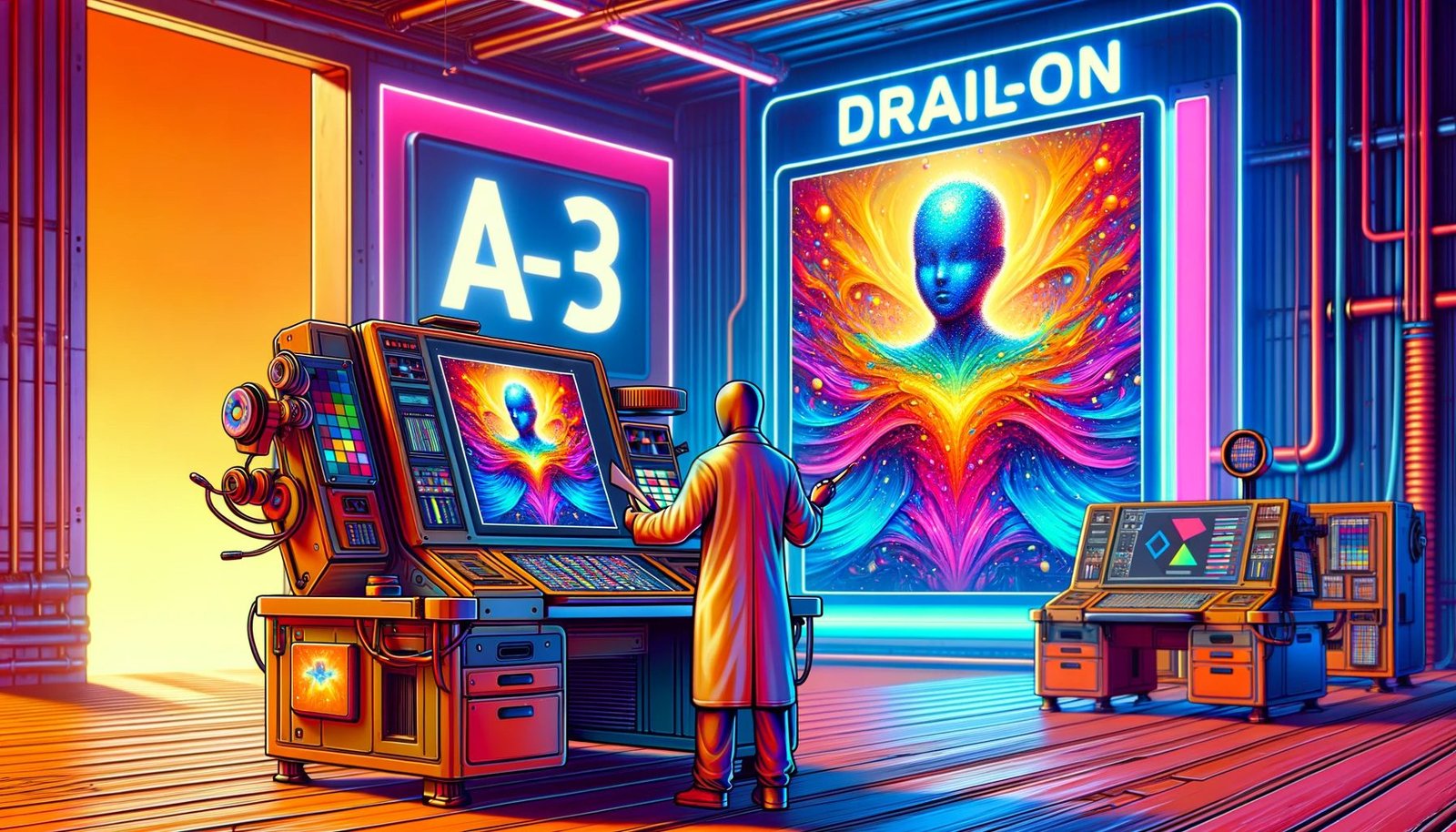
Tips for Maximizing Creativity with Craiyon
In the realm of AI-driven creative tools, Craiyon stands out as a platform that offers immense potential for artists, designers, and businesses alike. However, to truly harness its capabilities, users need to understand the nuances of the platform and employ certain best practices. Here’s a guide to maximizing your creativity with Craiyon.
Best practices for generating stunning images.
1. Be Specific with Prompts:
While Craiyon is adept at understanding textual prompts, being specific in your descriptions can yield more accurate results. Instead of “sunset,” try “a golden sunset over a tranquil ocean with silhouetted palm trees.”
2. Experiment with Variations:
Don’t settle for the first image generated. Play around with different phrasings or add more details to your prompts to see a range of outputs.
3. Use the Built-in Filters and Tools:
Craiyon likely offers a suite of editing tools and filters. Utilize them to tweak and enhance the generated images, adjusting aspects like brightness, contrast, and saturation.
4. Combine AI with Human Touch:
While Craiyon can produce impressive visuals, combining its outputs with manual edits using graphic design software can lead to truly unique creations.
How to refine and improve results over time.
1. Understand the Algorithm:
The more you use Craiyon, the better you’ll understand its strengths and limitations. Recognize patterns in how it interprets prompts and adjust your approach accordingly.
2. Provide Feedback:
Platforms like Craiyon often have feedback mechanisms. If an image isn’t up to par, provide feedback. This not only helps improve the platform but can also refine your future results.
3. Stay Updated:
AI platforms are continually evolving. Keep an eye on updates or new features introduced by Craiyon, as they can offer enhanced capabilities or tools that can improve your results.
4. Collaborate and Learn:
Join communities or forums of Craiyon users. Sharing experiences, challenges, and solutions with peers can provide new insights and techniques to improve your creative process.
5. Practice Makes Perfect:
Like any tool, the more you use Craiyon, the better you’ll get at eliciting the desired results. Regularly experiment with different prompts and styles to hone your skills.
While Craiyon offers a revolutionary approach to text-to-image generation, its true potential is unlocked when users approach it with a blend of creativity, understanding, and experimentation. By following these tips and best practices, you can ensure that your experience with Craiyon is both productive and creatively fulfilling.
Conclusion
In the ever-evolving landscape of AI-driven creative tools, the emergence of platforms like Craiyon signifies a new era of possibilities. While DALL-E 3 has undoubtedly set a high benchmark in the realm of text-to-image generation, Craiyon emerges as a formidable contender, offering its unique set of features and capabilities.
The journey of exploring Craiyon underscores the importance of continuous innovation in the AI sector. It’s not just about creating a tool that mimics human creativity but about developing platforms that can work alongside humans, enhancing our innate abilities and pushing the boundaries of what’s possible.
For businesses, artists, and creatives, the choice between DALL-E 3 and Craiyon isn’t necessarily about one being superior to the other. Instead, it’s about finding the tool that aligns best with their specific needs, goals, and creative visions.
As we stand at the cusp of this new frontier, it’s an exciting time for all those involved in the creative fields. The fusion of art and technology, epitomized by platforms like Craiyon, promises a future where our imaginations are the only limit.
To all our readers, whether you’re a seasoned artist, a budding entrepreneur, or someone simply intrigued by the potential of AI, we encourage you to dive in. Explore these platforms, experiment with their features, and harness the power of AI to elevate your creative endeavors to unprecedented heights. The future of creativity is here, and it’s waiting for you to shape it.
Dive into the world of AI-powered creativity and witness the magic firsthand! We invite you to try out Craiyon and unleash your imagination. Whether you’re an artist, a business owner, or someone with a flair for creativity, Craiyon offers a canvas like no other.
Have you already experimented with Craiyon? We’d love to see your creations! Share them with us and the community, and let’s celebrate the fusion of technology and art.
Moreover, as we navigate this exciting frontier, your feedback is invaluable. Join the discussion on the future of text-to-image generation, share your insights, and let’s shape the narrative together. After all, the future of AI in creativity is not just about technology; it’s about the community and the collective vision we bring to the table.
So, are you ready to embark on this creative journey? Let’s redefine the boundaries of art and technology together!
Additional Resources
Venturing into the realm of AI-powered creativity with Craiyon? To ensure you make the most of this innovative tool, we’ve compiled a list of valuable resources to guide and inspire you:
- Craiyon Tutorials: Whether you’re a beginner or looking to refine your skills, the official Craiyon Tutorials cover everything from the basics to advanced techniques. Dive in and start creating!
- Community Forums: Join the vibrant Craiyon Community Forum to connect with fellow users, share your creations, ask questions, and discover tips and tricks from seasoned artists and tech enthusiasts.
- Webinars and Workshops: Stay updated with the latest features and best practices by attending Craiyon’s webinars and workshops. Learn directly from the experts and enhance your creative process.
- User Documentation: For a comprehensive understanding of Craiyon’s functionalities, the User Documentation is your go-to guide. It’s detailed, user-friendly, and constantly updated.
- Inspiration Gallery: Need some inspiration? The Craiyon Inspiration Gallery showcases stunning creations from users around the world. Let these masterpieces spark your imagination!
- FAQs: Have a burning question? The Frequently Asked Questions (FAQs) section addresses common queries and provides clear, concise answers.
- API Documentation: For developers and tech enthusiasts looking to integrate Craiyon into their platforms or applications, the API Documentation offers a deep dive into the technical aspects.
Remember, the journey with Craiyon is as much about the community as it is about the technology. Engage, learn, share, and let’s push the boundaries of what’s possible together!
- What is Craiyon, and how does it position itself as a DALL-E 3 alternative?
- Craiyon is a text-to-image generation tool that offers capabilities similar to DALL-E 3, providing users with a powerful alternative for creative visual content creation.
- How does the image generation quality of Craiyon compare to DALL-E 3?
- While DALL-E 3 is known for its high-quality image outputs, Craiyon also boasts impressive results, making it a competitive alternative in the market.
- What are the unique features of Craiyon that set it apart from DALL-E 3?
- (You can delve into specific features of Craiyon, such as user interface, customization options, or integration capabilities.)
- Is Craiyon more cost-effective than DALL-E 3 for businesses and individual creators?
- Depending on the pricing model and the features offered, Craiyon might present a more budget-friendly option for certain users.
- How user-friendly is Craiyon’s interface compared to DALL-E 3?
- Craiyon emphasizes a streamlined user experience, making it accessible for both beginners and professionals.
- Can Craiyon handle bulk image generation requests similar to DALL-E 3?
- Yes, Craiyon is designed to manage high-volume requests, ensuring efficient and rapid image generation.
- What kind of support and community does Craiyon offer to its users?
- Craiyon has a dedicated support team and an active community forum where users can share ideas, seek help, and discuss best practices.
- How does Craiyon ensure the originality and uniqueness of the images it generates?
- Leveraging advanced algorithms, Craiyon ensures that each generated image is distinct and tailored to the input text.
- Are there any notable collaborations or partnerships that Craiyon has entered into?
- (You can mention any significant collaborations or integrations that Craiyon has with other platforms or services.)
- How do experts in the field of AI and creative design view Craiyon as an alternative to DALL-E 3?
- Many experts appreciate the capabilities of Craiyon, recognizing its potential to revolutionize the text-to-image generation landscape alongside tools like DALL-E 3.

